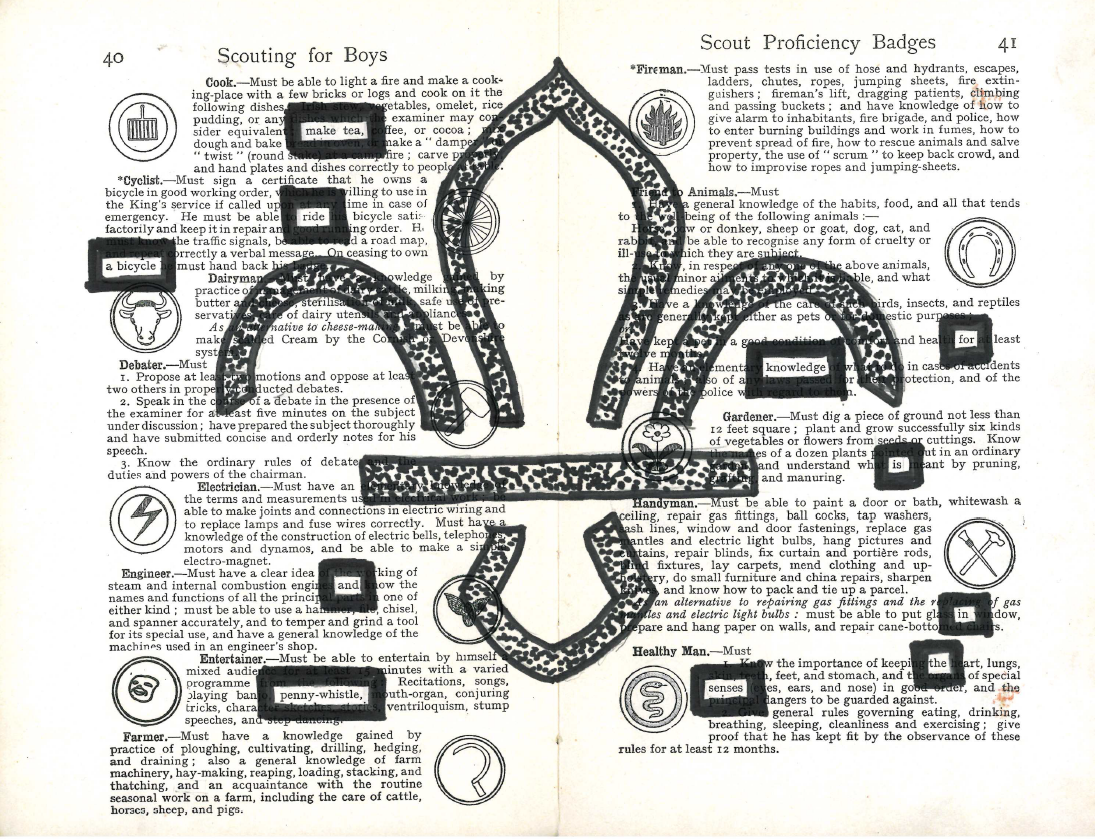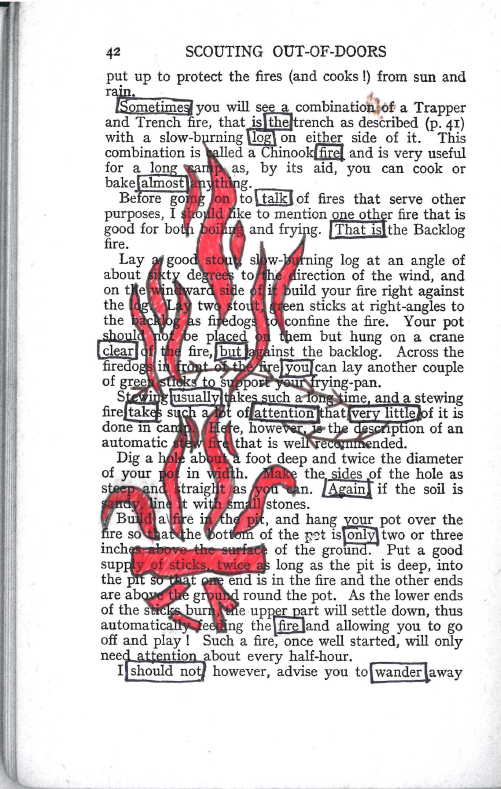
Try blackout poetry
You’ll need
- Coloured pens or pencils
- Old newspapers or magazines
Before you begin
- Use the safety checklist to help you plan and risk assess your activity. There's also more guidance to help you carry out your risk assessment, including examples.
- Make sure all young people and adults involved in the activity know how to take part safely.
- Make sure you’ll have enough adult helpers. You may need some parents and carers to help.
Planning and setting up this activity
- It’s up to you whether you use old newspapers and magazines or photocopy pages from books. You could ask people to suggest books to photocopy or ask them to bring photocopies of their favourite pages (if you do this, make sure to take some spares).
Running this activity
- Gather everyone together and explain that blackout poems are made using pages from books, newspapers, or magazines. Blackout poets pick out single words or phrases from the existing text, then piece them together to make something new. This kind of poetry embraces randomness, and also gives people a chance to mix poetry and visual art. You could show everyone some examples of blackout poetry examples below, or ask if anyone has seen or done it before.
- Remind everyone that there aren’t any right or wrong answers here.
- Ask everyone to take a page of text and something to mark the page, such as pencils, felt tips or colouring pencils.
- People should think of a theme for their poem. They may want to read the page to look for a ‘theme word’ to inspire possible topics for their poem. Words may stand out because they have meaning or significance, for example, because they link to a personal value, a favourite feeling, or a special event.
- Everyone should read their page. They should lightly circle any words that connect to their theme word or resonate with them – it’s also OK to circle words just because they sound nice!
- People shouldn't circle or mark more than three words in a row. If possible, it’s best pick words that work on their own.
- Next, people should read through the circled words in the same order that they appear on the page – do they want to remove any words? Are there any spaces where they need to add something?
- Once everyone’s settled on a final poem, they should erase any circles around words they’re not using. They might want to draw through them or create a picture around them.
- Finally, people should circle the words that they’re using more obviously – they could press harder with their pencil or use a pen.
- Anyone who wants to could share their poem with the group or a friend.
Blackout poetry examples


Reflection
This activity was all about trying new things. What do people usually think of when someone says ‘poetry’? Was this activity about poetry? People may disagree – when they think of poetry, they may jump to rhyming, broken sentences, or a pattern. The poems people created in this activity structured words in meanings and rhythms, even if they didn’t rhyme or follow a traditional format. Just like other forms of writing, poetry can be anything the author wants it to be.
This activity was also about communication. What messages did people’s poems give about their themes? Instead of thinking of words, people had to work with what was already on the page and transform it into something else. What does it mean to be a writer (or a poet)? Are people only writers if their work’s been published in a physical book, or is it enough to just give writing a go and enjoy it? Do people’s ideas have to be entirely original, or is it OK for people to be inspired and base creations on stories or poems they’ve already read?
Safety
All activities must be safely managed. You must complete a thorough risk assessment and take appropriate steps to reduce risk. Use the safety checklist to help you plan and risk assess your activity. Always get approval for the activity, and have suitable supervision and an InTouch process.
Embrace creativity by adding an illustration or design to the page. Remember not to draw over the circled words in the poem!
Why not try it in pairs? You’ll have to work creatively to bounce ideas off each other and settle on a masterpiece.
People can use whatever tools work for them – including different coloured paper, tablets, or computers. They could also work in pairs so only one person needs to write. At the end of the day, it’s about creativity – it’s OK if the grammar gets a bit confused or the spelling isn't exact.
All Scout activities should be inclusive and accessible.
If anyone really enjoyed this activity, they could continue the challenge and keep creating poetry. Why not keep a poem diary, and use it to express thoughts and feelings about everyday events? If people want to, they could take part in an open mic session to share some of their creations.
Everyone could choose their own material, whether it’s a page from a favourite magazine, newspaper, or book.
